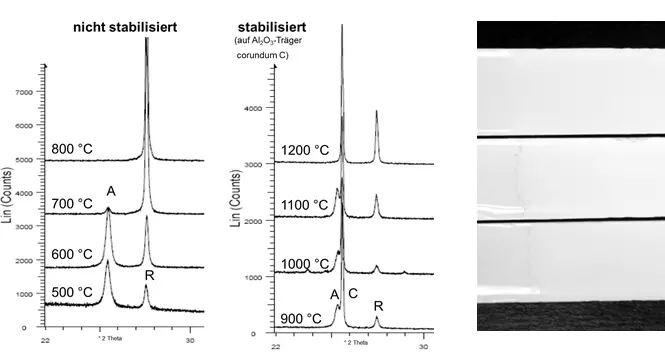Thermal stable and photocatalytic active titania for hygienic ceramic surfaces

At a glance
- Project leader : Prof. Dr. Dirk Penner
- Project team : Manuel Hofer
- Project status : completed
- Funding partner : Other
- Contact person : Dirk Penner
Description
For the production of hard, abrasion-resistant photocatalytic active titania coatings manufactured at temperatures above 1000 °C the photocatalytic most active titania modification anatase must be stabilized to avoid phase transformation to rutile. Usually nanocrystalline anatase is transformed to rutile at 650 to 700 °C. This phase transformation prohibits the direct use of anatase in ceramic processing like firing or glazing. In this project a solution was developed to stabilize the anatase phase up to 1200 °C by a sol-gel process. The thermal stability of the anatase was maintained also on different types of commercial lead free glazes. The photocatalytic activity of the stabilized titania was demonstrated by degradation tests with methylene blue dye solutions. This development shows a way to produce hygienic ceramic surfaces with extraordinary durability and photocatalytic properties to destroy organic pollutants, eg for the use as sanitary ware surfaces or as hygienic surfaces in hospitals.